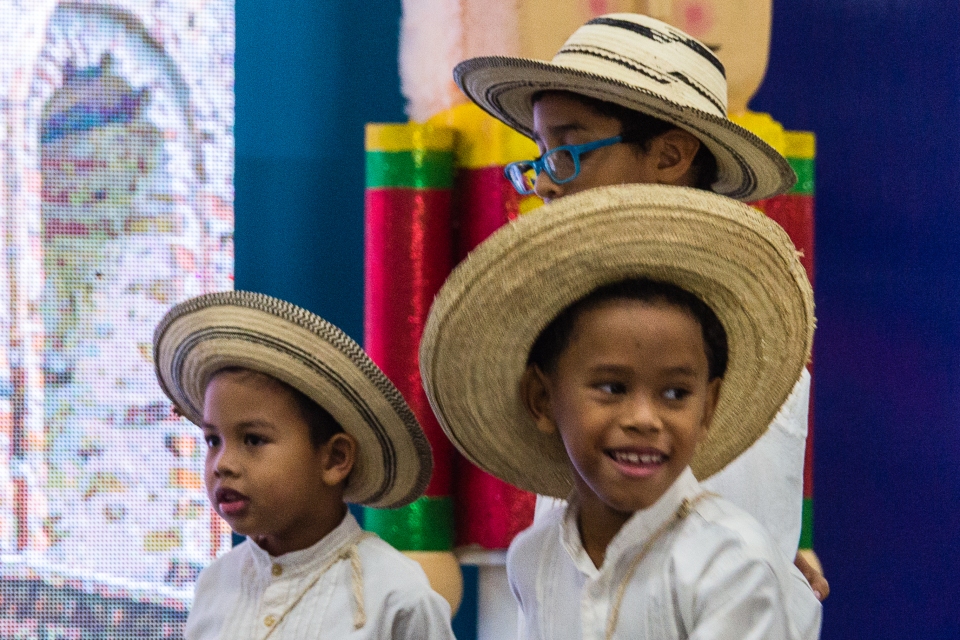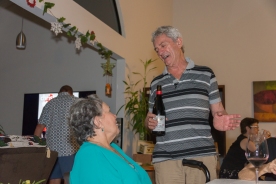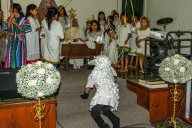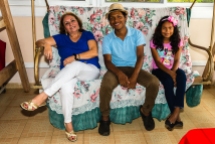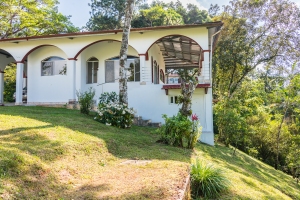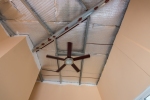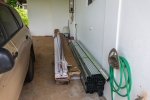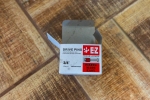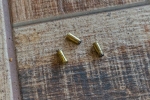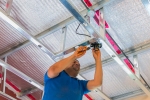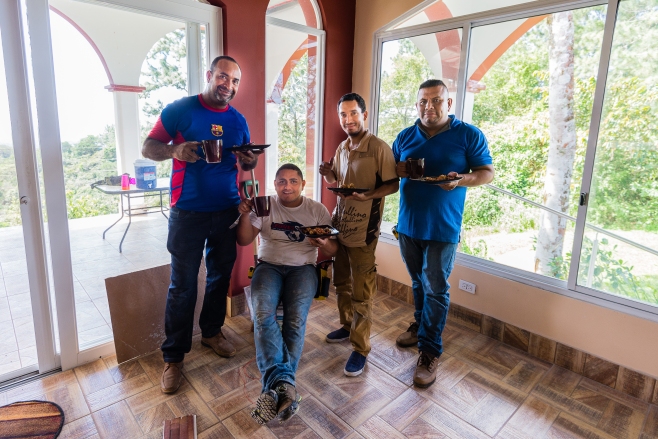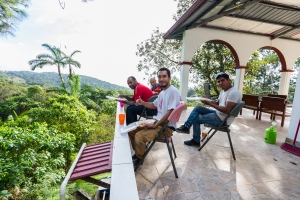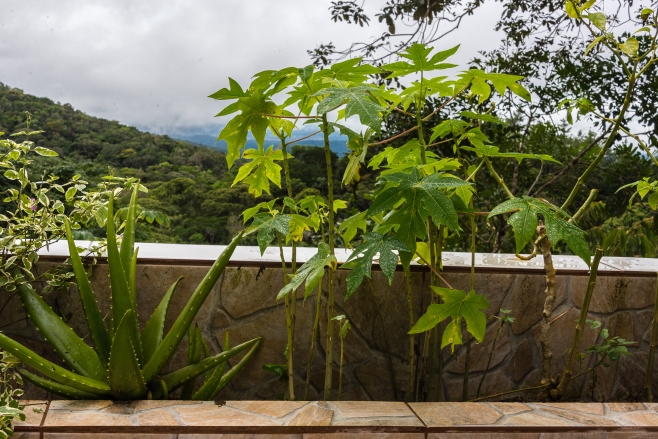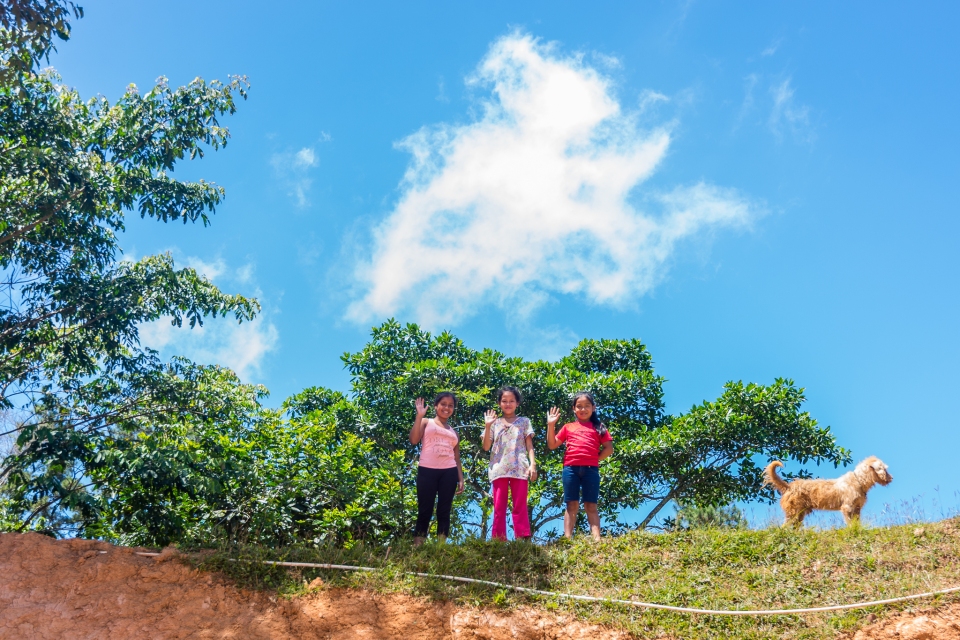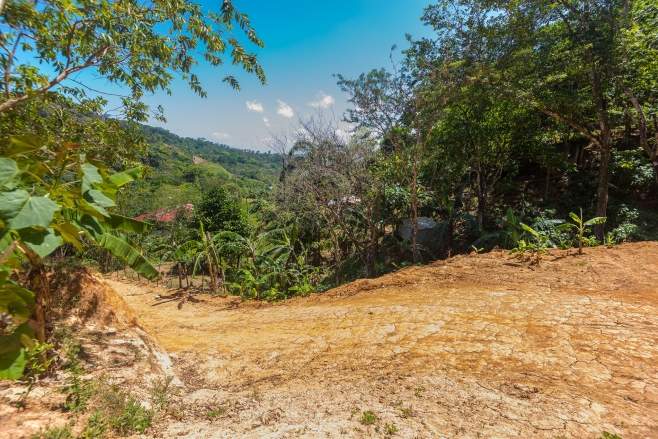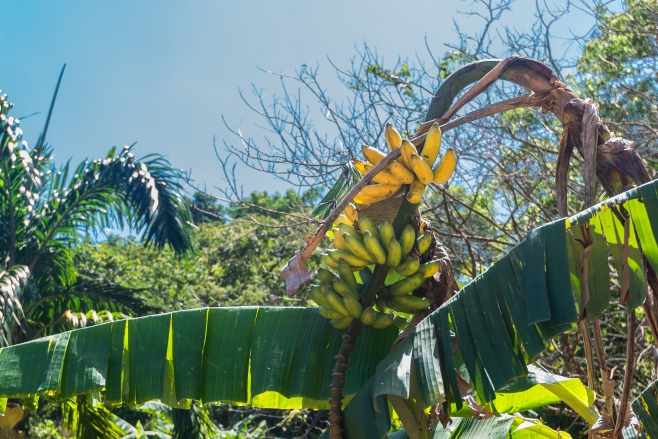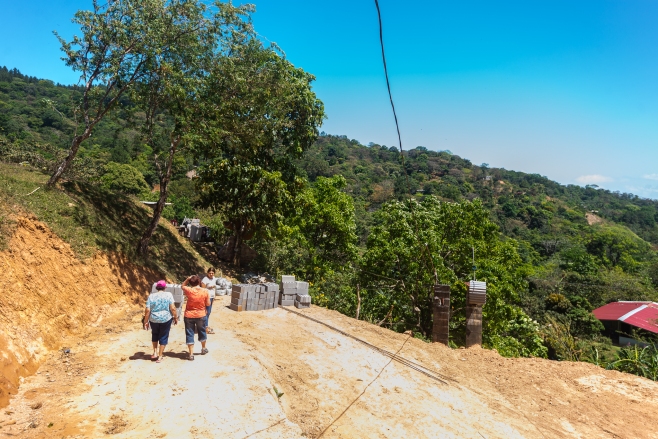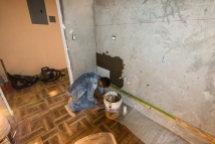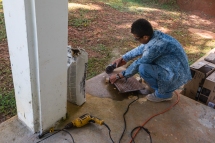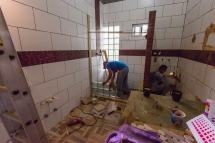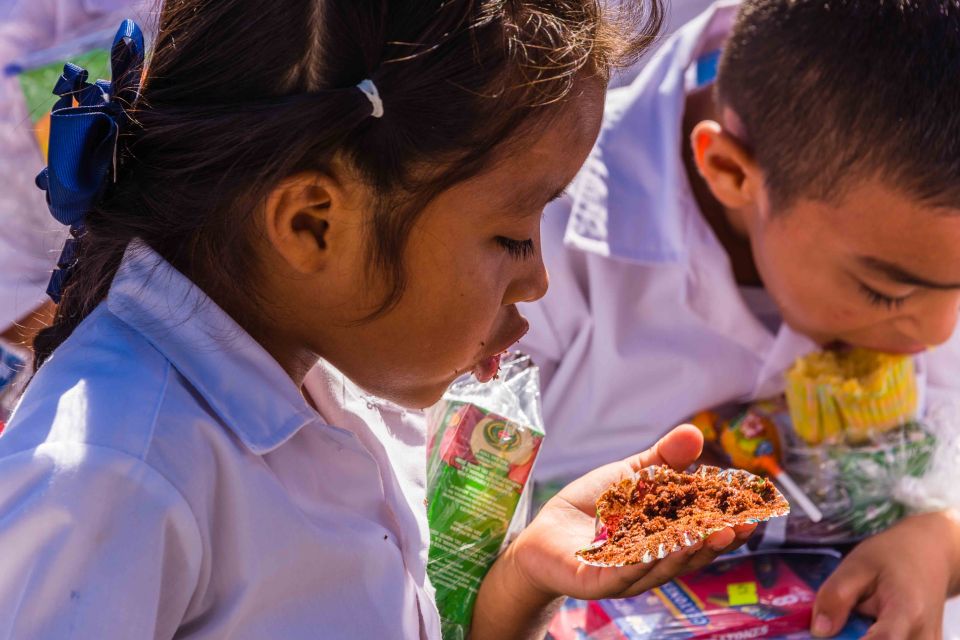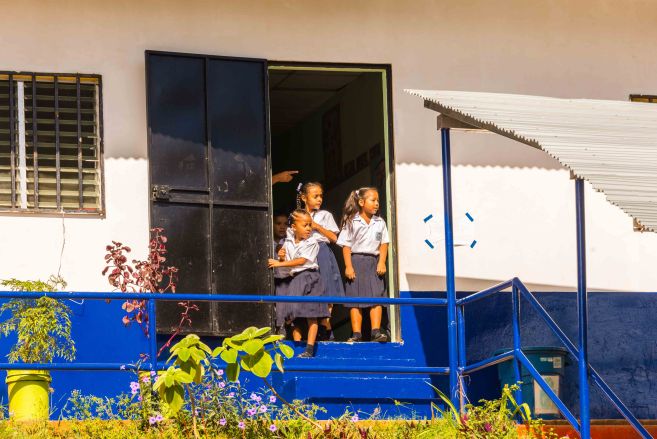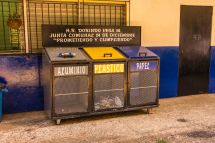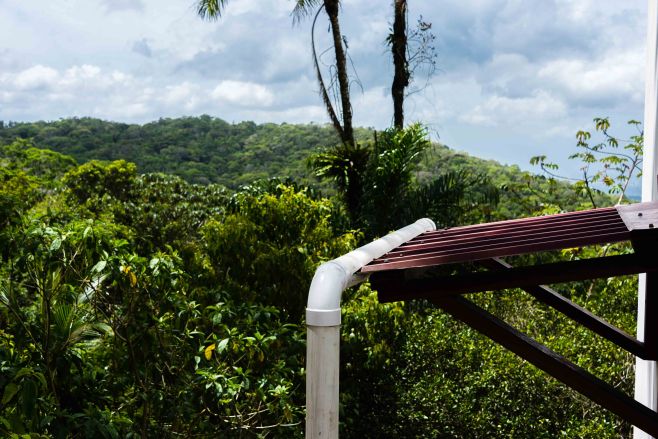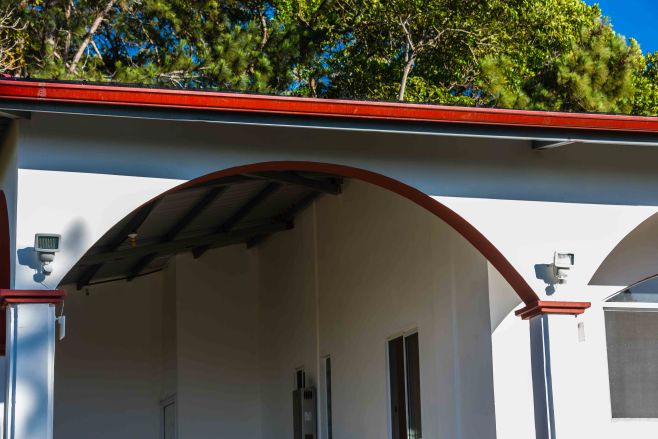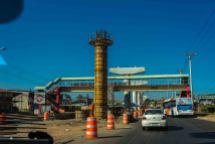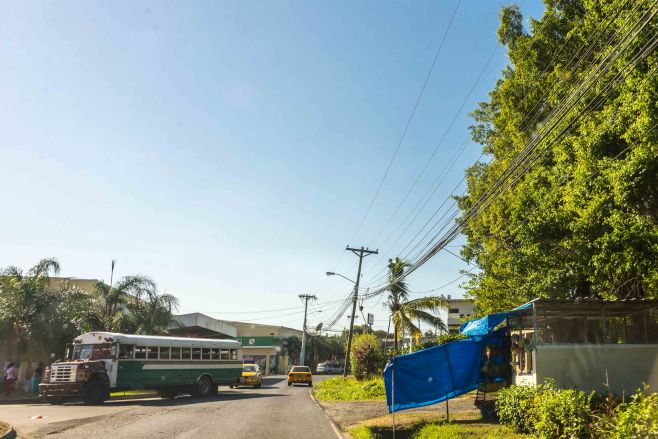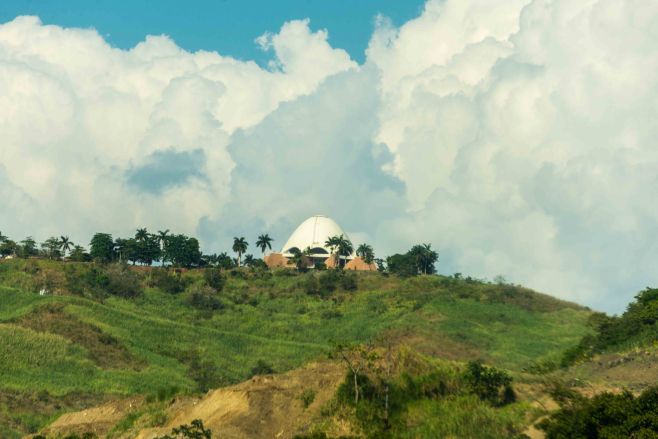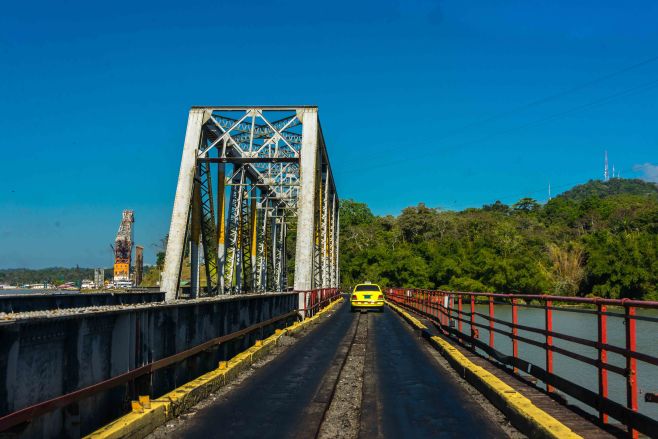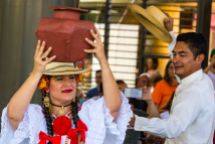What Do You Do at Christmas?
Friends think we are lucky to avoid the cold Canadian winters and they know we are in the jungle in the middle of a National Park in Central America. It often prompts the question, “What do you do for Christmas?” Some feel that for Christmas we are alone and isolated. Well… this is not the case so I thought I would give you a little rundown of what we, and others, have been doing this Christmas in our little Panamanian mountain community, Los Altos de Cerro Azul. It also gives me a chance to show you some of the photos from my very busy camera.
This year the season began with a regular event. Each year just before the Christmas season, with the help of our local branch of the Vecinos Vigilantes (Neighbourhood Watch), people in our community gather used clothing for distribution to those in need from a little remote community further up the mountain called Altos de Pacora. The donations hauled to the community where the local school helps in the distribution.
Another recurring event is the gathering of cash donations by one of the residents, for distribution to the Security Guards and/or Club Staff. These folks spend their life aiding us by keeping us safe and fed at the small club restaurant. They don’t earn much in wages so a bit extra is helpful at Christmas.
A few days before Christmas, one of our Pot Luck dinners was hosted by one of the residents. This approach is the usual way we residents get together. The food is always amazing because people make and bring things that are their specialty, and people here are from all over the world. Here are some photos from this event.
On the 23rd, I had the privilege of shooting the Children’s Christmas Pageant at Gamboa Union Church in Gamboa, right on the Canal about half way through. (http://gamboaunion.com/). This is an annual event that includes the distribution of food to a group of Indigenous families who attend the church from San Antonio Island. Here are some photos for you.
Later that day, we attended another regular event. Each year friends of ours host a Christmas party and dinner for some of the workers of the community and their families. Each child receives two gifts, one piece of clothing and one toy. Most of these people have a low-income so it is great to see the expressions on the kids faces when they get a gift. Oh, and another scrumptious meal. Here are a few of the photos.
The next day, on Christmas Eve, we decided to take a load of presents to a very special place in Colon so we loaded up our Toyota Santa Waggon and headed north. Casa Providencia (https://www.heartscrychildren.com/casa-providencia) is the only orphanage in Panama for disabled kids. I was able to shoot the grand opening last March while we were here. Oh… I just realized that I never posted the photos from that event! Will have to catch it up for you while we are here.
Anyway, there are now nine “Casa Kids” at the orphanage. There will be 55 once they are at full capacity. We just thought it important to make sure those special kids had something for Christmas. We stopped on the way to pick up a little something else that all the kids love… ice cream.
Note that I have not included any photos of the kids as their privacy is mandated.
Our little run on Christmas Eve was to be a leisurely trip to the orphanage in Colon, followed by a nice dinner at the Rainforest Resort in Gamboa, followed by a candlelight service at our church, then back home. The plan forgot to include the fact that plans in Panama often go awry. About half way to Colon we spotted an accident in the opposite direction we were travelling. The police had closed the southbound toll road completely and we passed miles of parked cars waiting to get through. Further up the road, we noted that the police were routing all the southbound traffic to the old highway.
After our stop at the orphanage, we got to join the lineup for the 50 kilometer trip back to Gamboa, at parking lot speeds. We missed dinner and made the church just in time for the service.
Christmas Day had us hosting our third Christmas Day Brunch from 11:00 til 15:00. It was a total success with thirty-one people attending. Again, the variety of food was amazing and it was good to see people hanging around and visiting with each other throughout the event.
So that is what Christmas is like for us here in Panama!. I wouldn’t say it was at all quiet and restful but there will be lots of time after Christmas to catch up. We hope you had a Merry Christmas and will have a Happy New Year. Also, a big thanks for following our little blog.
